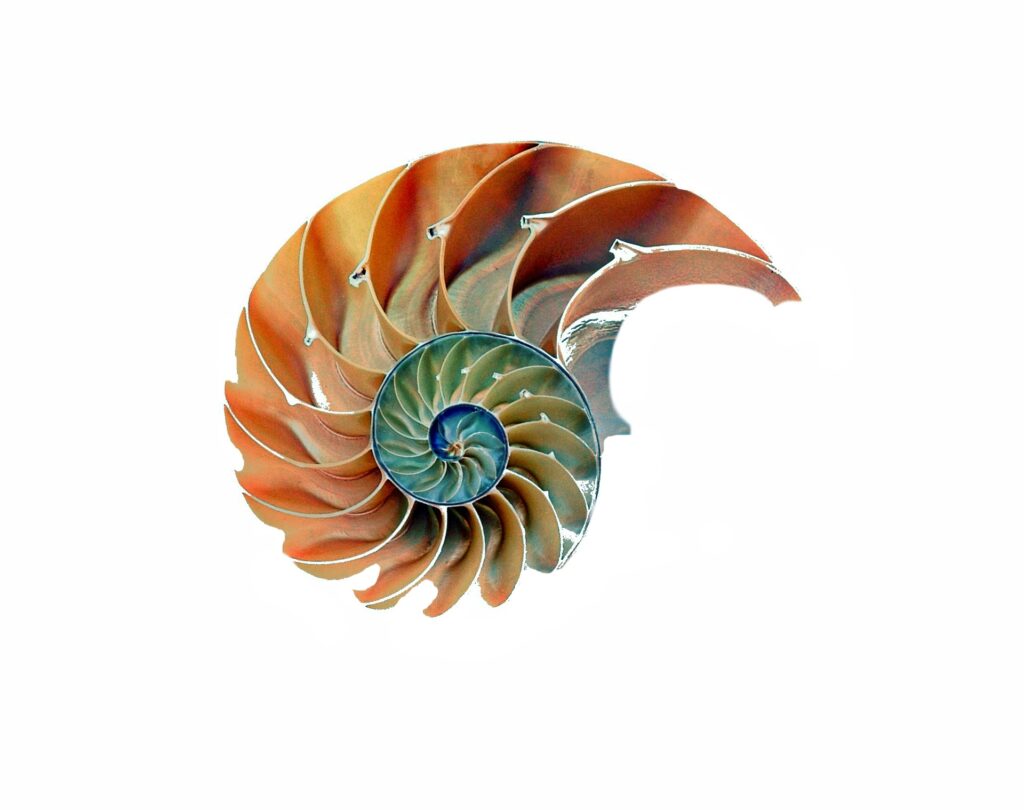Intelligent Design has been Studied for Centuries
Most people do not realize that Charles Darwin studied intelligent design (ID) before he published On the Origin of Species (1859). In this brief post, I will discuss the terms intelligent design (ID) and the argument by design (Paley, 1785/1824). I will also discuss how Darwin studied intelligent design at Cambridge. Even though the term intelligent design was not used during Darwin’s lifetime, the concept and logic behind ID was very familiar to Darwin.
What does Intelligent Design Mean?
The web site, dictionary.com defines intelligent design as, “the theory that the universe and living things were designed and created by the purposeful action of an intelligent agent.” (“Intelligent Design,” 2012)
In a practical sense, ID is also a philosophy of life; it is a way of understanding how life has come into existence. Are we here simply because of some great cosmic random events? Are we a product of pure chance, in a universe which suddenly appeared out of nothing? Or, are we here because there was an Intelligent Designer, who caused the universe to come into existence?
Intelligent Design in Philosophy
Philosophy is the love of wisdom. The great Greek philosopher Aristotle (384–322 B.C.) spoke of an “unmoved mover” who set the universe in motion (Book XI of the Metaphysics). By unmoved mover, Aristotle meant that God set everything in motion. He was the first cause. He started everything in the universe moving, but there was no force that moved God.
Centuries later, the Catholic theologian Thomas Aquinas (1225–1274), restated Aristotle’s argument of an “unmoved mover,” as one of many proofs of the existence of God. Aquinas was perhaps the first Christian theologian to use logic and reason to present proofs of the existence of God, without using the Bible.
Moving forward a few more centuries, the British theologian William Paley (1743 – 1805) presented his analogy of a person walking along a beach and discovering a watch in the sand. Paley’s famous analogy is referred to as the argument by design. Paley (1785/1824), in his book Moral and Political Philosophy writes,
In crossing a heath, suppose I pitched my foot against a stone, and were asked how the stone came to be there; I might possibly answer, that, for anything I knew to the contrary it had lain there forever: nor would it perhaps be very easy to show the absurdity of this answer. But suppose I found a watch upon the ground, and it should be inquired how the watch happened to be in that place; I should hardly think of the answer which I had before given, that, for anything I knew, the watch might have always been there. Yet why should not this answer serve for the watch as well as for the stone? Why is it not admissible in the second case, as in the first? For this reason, and for no other, viz. that, when we come to inspect the watch, we perceive (what we could not discover in the stone) that its several parts are framed and put together for a purpose, e.g. that they are so formed and adjusted as to produce motion, and that motion so regulated as to point out the hour of the day; that if the different parts had been differently shaped from what they are, of a different size from what they are, or placed after any other manner, or in any other order, than that in which they are placed, either no motion at all would have been carried on in the machine, or none which would have answered the use that is now served by it. . .
This mechanism being observed (it requires indeed an examination of the instrument, and perhaps some previous knowledge of the subject, to perceive and understand it; but being once, as we have said, observed and understood), the inference, we think, is inevitable; that the watch must have had a maker; that there must have existed, at some time, and at some place or other, an artificer or artificers, who formed it for the purpose which we find it actually to answer; who comprehended its construction, and designed its use.
(Paley, 1802/2006, pp. 7-8)

the inference, we think, is inevitable; that the watch must have had a maker
William paley
Philosophers place Paley’s argument by design under a category of teleological arguments, for the proof of God. Teleology is from the Greek telos, “end,” and logos, “reason.” A teleological argument, therefore, argues that since there is order in the universe, then there must be a Creator who has established the laws of the universe. Gravity and electromagnetism are two examples of the laws of universe.
In summary, intelligent design is the evidence of a Creator. Aristotle’s argument of an unmoved mover is another type of teleological argument. Aristotle (384–322 BC) used reason, to argue for the existence of a Creator. Aristotle was not aware of the Law of Gravity or electromagnetism. What Aristotle, Aquinas and Paley all have in common, is that they are all arguing in favor of an ultimate cause for life. That causal agent is God.
Charles Darwin Studied Paley’s Argument by Design
Charles Darwin studied intelligent design, when he read Paley’s argument by design, quoted above. Darwin read the book Moral and Political Philosophy (Paley, 1785/1824), in order to complete his B.A. degree at Cambridge; He completed degree in 1831. Here are Darwin’s comments about his final exams at Cambridge, which required him to study Paley.
In order to pass the B.A. examination, it was, also necessary to get up Paley’s Evidences of Christianity, and his Moral Philosophy. This was done in a thorough manner, and I am convinced that I could have written out the whole of the Evidences with perfect correctness, but not of course in the clear language of Paley. The logic of this book and as I may add of his Natural Theology gave me as much delight as did Euclid.
(Barlow, 2005, pp. 50-51)
Since Darwin was no stranger to the argument by design, as presented by Paley, why should it be any surprise that Darwin (1876) spoke about the Creator in editions 2-6 of his On the Origin of Species? Darwin mentioned “the Creator,” in versions 2-6 of On the Origin of Species.
There is grandeur in this view of life, with its several powers, having been originally breathed by the Creator into a few forms or into one: and that, whilst this planet has gone cycling on according to the fixed law of gravity, from so simple a beginning endless forms most beautiful and most wonderful have been, and are being evolved.
(Darwin, pp. 648-649)
There is grandeur in this view of life, with its several powers, having been originally breathed by the Creator
charles darwin
Intelligent Design in Nature and Mathematics
Here is another teleological argument (argument by design) for the existence of a Creator. The mathematician Fibonacci, discovered a perfect geometric pattern, which repeats in the shell of a mollusk, called a Nautilus. Deborah Byrd (2013) writes the following about Fibonacci:
Leonardo Pisano Bigollo (c. 1170 – c. 1250) – aka Leonardo of Pisa or sometimes just Fibonacci – was one of the most famous mathematicians in the Middle Ages. He initiated the spread of the Hindu–Arabic numeral system to Europe, in his book Liber Abaci (Book of Calculation), published in the year 1202. This number system is based on 10 different glyphs or symbols, including a zero.
(Byrd, 2013)
It’s the system we use every day: 1, 2, 3, 4, 5, 6, 7, 8, 9, 0. Fibonacci also laid the groundwork for our modern-day mathematical understanding of certain shapes in nature, including Nautilus shells. In his book, Fibonacci introduced what’s now called the Fibonacci number or sequence

Fibonacci (c. 1170 – c. 1250) also laid the groundwork for our modern-day mathematical understanding of certain shapes in nature, including Nautilus shells.
Conclusion
- Darwin clearly rejected Christianity. He recorded loss of Christian faith in his journal. Darwin visited the Galapagos Islands, in 1835.
- Intelligent Design is defined as: “the theory that the universe and living things were designed and created by the purposeful action of an intelligent agent.”
- The term intelligent design is a modern term for the older Argument by Design, that was advanced by British theologian William Paley (1743 – 1805).
- Darwin studied intelligent design when he read Paley’s argument by design.
- Teleological arguments are philosophical arguments, for the existence of a Creator. These arguments include Aristotle’s “unmoved mover”; the theologian Aquinas who argued for a first cause for motion, Paley’s argument by design; and finally the modern theory of intelligent design.
- Although Darwin clearly rejected Christianity, he openly advanced the idea of a Creator as the source of life on Earth. This is in line with intelligent design – which is agnostic to who the Creator is.
- Finally, many famous scientists have seen mathematical proofs in nature, that infer that there is a Creator or first cause to life on Earth. Fibonacci used mathematics to explain symmetry in nature, which he observed in the Nautilus shell. Isaac Newton saw order in the universe, with his discovery of the law of gravity.
Questions for Discussion
- Why is intelligent design considered an agnostic theory?
Hint: Agnostic means that a person can know nothing about the existence or nature of God, or the supernatural. - Why is Aristotle’s theory of an unmoved mover, considered a teleological theory?
- What is the argument by design, which was presented by William Paley?
- Why do you think Darwin referred to the Creator, multiple times in his book On the Origin of Species?
References
Barlow, N., Ed. (2005). The autobiography of Charles Darwin 1809-1882. New York, W. W. Norton & Company.
Byrd, D. (2013). “What’s special about the shape of a Nautilus shell?”. Retrieved Aug 15, 2020, from https://earthsky.org/…/nautilus-shell-fibonacci….
Darwin. C. (1876/1998). The Origin of Species: By means of natural selection or The preservation of favored Races in the struggle for life (6th ed.). New York: The Modern Library.
Intelligent Design. (2012). Harper Collins Publishers. Retrieved from dictionary.com website: https://www.dictionary.com/browse/intelligent-design
Paley, W. (1785/1824). Moral and political philosophy. New York,, S. King.(2020). “Intelligent Design.” Retrieved Aug 15, 2020, from https://www.dictionary.com/browse/intelligent-design.
